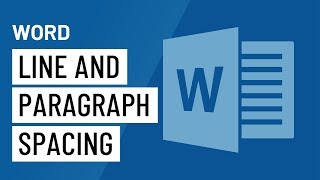
Introduction:
In the dynamic landscape of word processing, Microsoft Word 2016 stands as a powerhouse, offering an extensive array of formatting tools to empower users in their document creation journey. Among these tools, Line and Paragraph Spacing emerge as pivotal elements, contributing to document clarity, readability, and overall visual appeal. In this exhaustive guide, we will delve into the intricacies of Word 2016’s Line and Paragraph Spacing features, exploring their diverse applications, advanced functionalities, and tips for optimizing document layout.
Section 1: The Basics of Line and Paragraph Spacing
1.1 Line Spacing Essentials:
Line spacing plays a vital role in determining the vertical distance between lines of text within a paragraph. Word 2016 provides users with a range of options, including single, 1.5, and double spacing, allowing for flexibility in document presentation. Understanding how to manipulate line spacing is fundamental to creating documents with optimal readability.
1.2 Paragraph Spacing Fundamentals:
Paragraph spacing involves the vertical distance between paragraphs, influencing the overall visual flow of a document. Word 2016 enables users to customize paragraph spacing, ensuring that the document strikes a balance between cohesion and clarity. Adjusting paragraph spacing is particularly crucial in avoiding the visual clutter that can arise from cramped text.
Section 2: Advanced Line and Paragraph Spacing Options
2.1 Customizing Line Spacing:
Word 2016 empowers users to go beyond preset line spacing options by providing custom line spacing settings. This advanced feature enables users to define precise spacing values, catering to specific document requirements and accommodating unique formatting preferences.
2.2 Adding Space Before and After Paragraphs:
To enhance document aesthetics and readability, Word 2016 introduces the option to add space before and after paragraphs. This feature allows users to create visually appealing document structures, separating paragraphs and improving overall document flow.
Section 3: Tips for Optimizing Document Layout
3.1 Consistent Line and Paragraph Spacing:
Maintaining consistency in line and paragraph spacing is crucial for document cohesion and a polished appearance. Word 2016 facilitates this by allowing users to easily replicate spacing settings, ensuring uniformity throughout the document.
3.2 Utilizing Styles for Efficiency:
Styles in Word 2016 serve as powerful tools for streamlining document formatting. Users can create custom styles that include predefined line and paragraph spacing settings, providing efficiency and consistency in the application of formatting across the entire document.
Section 4: Collaborative Editing and Document Readability
4.1 Collaborative Editing and Spacing Consistency:
In collaborative environments, ensuring consistent line and paragraph spacing is essential. Word 2016’s collaborative editing features seamlessly integrate spacing adjustments, allowing teams to work together on documents without compromising visual integrity.
4.2 Enhancing Document Readability:
Proper use of line and paragraph spacing significantly contributes to document readability. By employing appropriate spacing settings, users can enhance the visual appeal of their documents, making them more accessible and comprehensible to readers.
Section 5: Accessibility and Inclusivity
5.1 Line and Paragraph Spacing for Accessibility:
Consideration for accessibility is increasingly important in document creation. Word 2016’s line and paragraph spacing options cater to accessibility needs by providing settings that improve readability for users with visual impairments or other reading challenges.
5.2 Inclusivity in Document Design:
The customization options offered by Word 2016’s line and paragraph spacing features contribute to inclusive document design. Users can adapt spacing settings to meet the needs of diverse audiences, fostering inclusivity in communication.
Conclusion:
Mastering the intricacies of line and paragraph spacing in Microsoft Word 2016 is pivotal for creating documents that are not only visually appealing but also optimized for readability. From understanding the basics of line and paragraph spacing to exploring advanced customization options, Word 2016 equips users with a comprehensive set of tools. By embracing these features, users can elevate their document layout, ensuring clarity, coherence, and accessibility in their written communication.